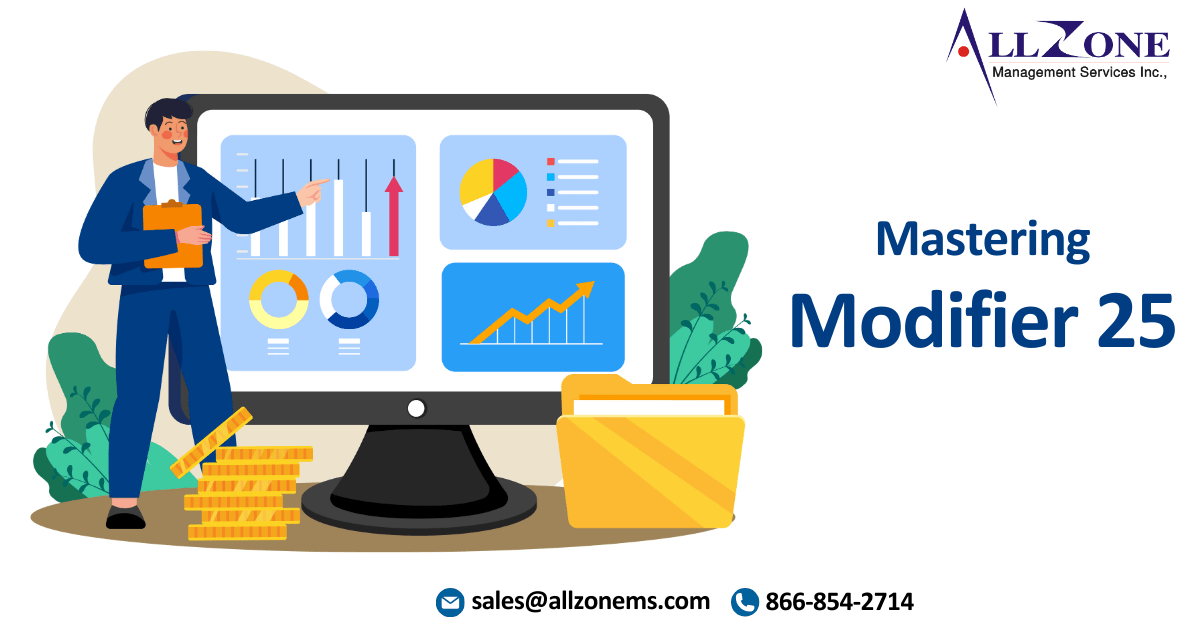Often, a seemingly routine preventive visit or minor surgery can take an unexpected turn when a patient mentions a new concern, such as “Oh, by the way…” If a physician provides additional care beyond the originally scheduled service, you may be able to bill for a separate evaluation and management (E/M) service using modifier 25. This modifier indicates a significant, additional service that warrants separate payment.
However, be cautious. The use of modifier 25 has been closely monitored by payers for years. To ensure proper billing and avoid potential audits, it’s crucial to understand the specific guidelines and documentation requirements. By using this modifier correctly, you can potentially generate additional revenue for your practice.
Understanding Modifier 25
Minor procedures inherently involve a basic evaluation of the patient’s health. The payment for these procedures, including the RVU, already accounts for pre-, intra-, and post-procedure work.
You should only append Modifier 25 when:
- A significant, separate E/M service is performed
- On the same day as the minor procedure
- By the same doctor
This modifier signals that substantial additional E/M work was done beyond the standard evaluation included in the minor procedure, justifying additional reimbursement.
What’s Significant and Separately Identifiable?
To justify billing for an additional E/M service with Modifier 25, the physician must perform a significant E/M service that goes beyond the standard pre-, intra-, and post-procedure care associated with the primary procedure. This indicates that a new or existing problem was addressed at the time of the procedure, and the patient’s condition required substantial additional work.
Determining Appropriate Use:
To determine if Modifier 25 is appropriate, consider the following:
- Standalone E/M Service: Was a complete E/M service performed for a specific problem or complaint? Could this problem be billed separately as a standalone service?
- Diagnosis: Is there a different diagnosis for this part of the visit? If not, did the physician perform extra work that went beyond the typical pre- or post-operative care associated with the procedure?
Justifying Modifier 25
To use Modifier 25 correctly, clear and detailed documentation is essential. The documentation must demonstrate that the physician performed a significant, separate E/M service that goes beyond the standard pre-, intra-, and post-procedure care associated with the primary procedure.
Key Considerations:
- Independent E/M Service: The E/M service should be documented separately from other procedures or services, even if it’s on the same day.
- Medical Necessity: The documentation must clearly explain the medical necessity of the E/M service and how it relates to the patient’s condition.
- Cognitive Work: The physician’s thought process and decision-making should be evident in the documentation.
- Sufficient Documentation: The encounter note should include a detailed history of the present illness, relevant comorbidities, a medically-warranted examination, and medical decision-making.
If the documentation only briefly touches on the current issue and the need for the additional service or procedure, it may not be sufficient to justify separate billing for the E/M service.
Avoid Misusing Modifier 25
Before adding Modifier 25 to an E/M code, consider these guidelines:
E/M Service:
- Same Provider, Same Day: The same physician must provide both the E/M service and the procedure on the same day.
- Significant E/M Work: The E/M service must be substantial and distinct from the procedure.
- Medical Necessity: The extra E/M work must be medically necessary.
- Beyond the Basic: The E/M service should go beyond the routine evaluation included in the procedure.
- Documentation: Document a comprehensive history, exam, and medical decision-making process that addresses more than just the main issue. A separate diagnosis isn’t always required.
By following these guidelines, you can ensure accurate and appropriate billing for E/M services with Modifier 25.
Global Period Considerations for Modifier 25
When considering Modifier 25 for an E/M service, be mindful of global periods:
-
- Minor Procedures: If the E/M service occurs on the same day as a minor procedure (0-day, 10-day, or “xxx” global period), Modifier 25 may be appropriate.
- Postoperative Period: Avoid using Modifier 25 for services related to the previous surgery during the postoperative period.
- Follow-up Visits: Routine follow-up visits within the global period are typically included in the procedure fee.
- Unrelated E/M Services: For unrelated E/M services during the global period, consider using Modifier 24.
- Decision for Major Surgery: If the E/M service leads to a decision for major surgery within 24 hours, use Modifier 57 instead.

